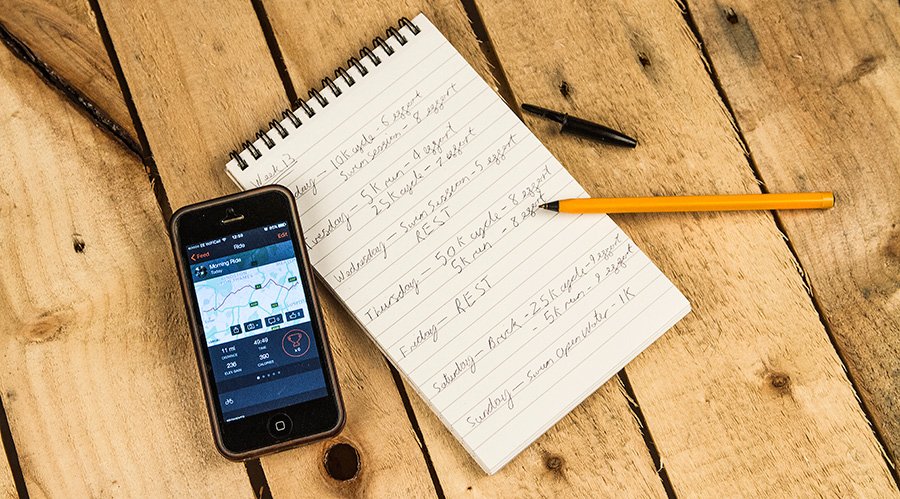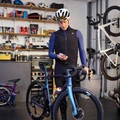Training just for one sport such as cycling can be difficult, so trying to find the right balance between family, work and then training for three sports at first glances can seem impossible. Look to these simple five tips from Mark Yeoman, Sigma Sports Athlete and founder of mySMARTcoach designed to help keep you on track this season.
If it’s your first ever season of triathlon, then look to keep those goals as simple as possible. Setting goals is key to staying on track and keeping motivated when weather, work or general life seems to be conspiring against you.

Avoid setting yourself outcome goals that are aimed towards the end product such as winning your race. This is naturally not achievable for everyone in the race except for one person, therefore, look towards setting yourself performance goals. Performance goals are based around improving certain aspects across the four disciplines of triathlon. These could be anything from completing the swim without doing breaststroke or looking to achieving a certain time for one of the four disciplines such as spending no more than one minute in T1.
If you are a more experienced triathlete, then you can raise the bar for your goals by looking to beat the time set at an event from the previous season or even looking to feature for your age group such as coming in the top five. Look to write these goals down and keep them in view such as on the fridge or on a board in front of your turbo trainer. Constant reminders will help to keep you motivated through those tough sessions.
Planning out your season will help with your motivation to train. Look to spread your races over the course of the season so that you have time to work between races to focus on areas that need improving. As a coach, once my athletes have planned out their races, we look to prioritise one or two as their ‘A’ races. These are the races where they are looking to perform at their best, such as a club championships, qualifying event or simply one where you are racing your mates.
We then look to have some ‘B’ races where we are looking to improve on one or two disciplines. These could include looking improving a discipline time, running faster off the bike or reducing their T1 transition time. This will help reduce the stress which can build over the course of the season where you might be tempted to set personal bests at every opportunity. Due to weather conditions and the variable nature of the race courses, this is not always possible.
Finally, we look to plan out some ‘C’ races where you look to race relaxed and without performance-based goals. Plan a couple of races where you can race with friends, travel to a scenic venue or even race overseas.

Organising and sticking to a training plan will help with the motivation and focus. Knowing what you are doing each day will help avoid those moments when you are thinking ‘what shall I do?’ and then end up doing nothing. Planning out the week ahead of when you can swim, bike or run is the first step to success.
Look to spread the session so that you don’t do back-to-back days of the same activity to avoid increased risk of injury. Look to have a mixture of endurance sessions designed to improve your endurance base. Theses should be easy enough to hold a conversation.
Speed-based sessions are key to improving your speed over any of the disciplines, you should be out of breath and able to give short answers.
Finally look to include technique sessions where you can improve your efficiency so that you can perform better across all three disciplines. Basic programs can be found online and this would be the next step as they will provide a variety of sessions designed to develop improvement across the three disciplines.
The final step towards improvement would be to get a personalised training program designed by a coach. These will be specific to you as an individual and not generic like online programs can be. These will include specific paces, times and distances for example to which you will be looking to achieve.
Keep a training diary, log. Once you’ve completed any session, look to write down some simple pieces of data such as time, distance, pace.
Alternatively, if you don’t have the use of a sports watch or phone app that can record numerous pieces of data from a session, then look to make a note of how the session when on a scale of 1 – 10, with 1 being super easy through to 10 where you couldn’t give any more. This will enable you to monitor progress over the course of the weeks so that you can compare previous sessions. Seeing improvements across the three discipline will once more help with your motivation.

Training on your own can be hard; when you look outside and the weather is poor, it’s easy to give that session a miss. Training with friends or joining a local triathlon club will help with the motivation to train when the weather is grim.
You will have access to club coaches, be around people who you can gain knowledge and understanding from. Organised sessions such as club rides are designed to improve your handling skills, build your confidence in riding in a group and most of all your fitness as you will be able to ride for longer in a group as you can shelter from the elements and have a rest.








